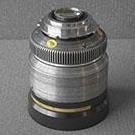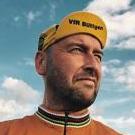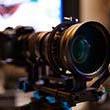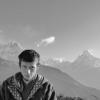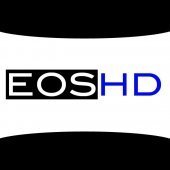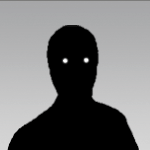
Cineman1
-
Posts
56 -
Joined
-
Last visited
Reputation Activity
-
 Cineman1 got a reaction from valery akos in ISCORAMA x1.33-16-9 RARE… for sale !
Cineman1 got a reaction from valery akos in ISCORAMA x1.33-16-9 RARE… for sale !
I have owned one of these and it is in fact the same body design as the Iscorama 54 only with a 1.33 squeeze factor and probably smoother focusing. Just because it says Isco instead of Iscorama shouldn't be reason to argue. Fantastically sharp and a beautiful piece of glass! I don't understand the negative comments here. This is a rare beauty and requires no cropping to achieve scope if used with a 16x9 sensor. If I had the money myself I'd likely buy this.
-
 Cineman1 got a reaction from richg101 in Iscorama 54 Non MC for sale + more
Cineman1 got a reaction from richg101 in Iscorama 54 Non MC for sale + more
Hello again,
I'm very sad to be saying this but I must part with my cherished Iscorama 54 Non MC anamorphot. It's in fantastic condition! I need the money for post on a feature I'm completing. It comes with a 67mm Redstan mount. I'm also selling a Bolex 16/32 with Redstan mount, a Letus anamorphot for GoPro Hero 3/3+ & 4, some Redstan mounts for the Bolex 8/19 anamorphot as well as for Iscorama 36 and other stuff as well. Let me know if you're interested in anything. Thanks guys. Here's the link for the Isco 54 :http://www.ebay.com/itm/ULTRA-RARE-Iscorama-54-non-MC-anamorphic-Redstan-mount-FF-gear-UV-/221854404259?hash=item33a78d8ea3
-
 Cineman1 got a reaction from Bozzie in Luchadores Fight! (Anamorphot 1.33x 50)
Cineman1 got a reaction from Bozzie in Luchadores Fight! (Anamorphot 1.33x 50)
Looks really great Bozzie. Please keep 'em coming. What anamorphic setup were you using?
-
 Cineman1 got a reaction from Rudolf in Kodak celluloid film saved by studios - oh and by the way - what's the point?
Cineman1 got a reaction from Rudolf in Kodak celluloid film saved by studios - oh and by the way - what's the point?
The argument will work itself out over the course of time. If top D.P.'s stop using film there will be less call for it. I'm quite sure most of them have done comparison tests with the state of the art digital.
You also seem to be assuming here that film is being kept alive as the capture medium. I think the studios need to keep film around to preserve their work. When large studios submit their films to the U.S. Copyright office for registration they submit film prints because of their archival quality. We know that in 50 or even 100 years if there's a projector or scanner around the film will still present a decent image. Digital on the other hand changes so rapidly that it's less comforting to imagine that a digital file submitted now will be readable in even 10 or 20 years time. The standard submission format for long form film or video content for those of us without many thousands to spend on film prints is DVD or Blu-ray. It's recommended to send a backup disc but that's it. How likely is it that those discs will still be readable if not corrupted in 20 years? I've spoken with the Copyright office several times about this and they don't ingest the files into their computer system...the discs simply get filed and it worries them too.
-
 Cineman1 reacted to Daniel Acuña in Kodak celluloid film saved by studios - oh and by the way - what's the point?
Cineman1 reacted to Daniel Acuña in Kodak celluloid film saved by studios - oh and by the way - what's the point?
Film is going to stay for people who want to use it (obviously it's not everyone), it's just another option ou there for "some" filmmakers. One of the main reasons people still want to shoot with film, apart from it's look, it's because of the workflow, they are used to it, (shooting, and then watching the dailies later, etc..). Some DPs hate the way digital works (I am not talking about how it looks) but because now they have 12 people watching on a screen what the DP is doing and giving remarks on his work, he has much more pressure, especially if actors are not happy the way they look. With film everyone would trust the DPs knowledge and experience.
In the end it's still just a tool to tell a story, if the directors thinks that it is going to help him tell the story because he prefers the look, the workflow, and what it means to shoot film, then so be it, who are we to tell if something is better!
I really don't see what the fuss is all about, we should be happy that film will still be around as an option to shoot a movie.
-
 Cineman1 got a reaction from Tito Ferradans in Anamorphic noob question
Cineman1 got a reaction from Tito Ferradans in Anamorphic noob question
I've been giving this some thought myself and here's what I've come up with. It's largely about focusing the viewer's attention. Lets use the film Alien as an example. Alien was shot anamorphically as was Blade Runner as Ridley Scott used to shoot his films in this format. Anamorphic lenses give shallower depth of field for a comparable field of view in spherical thus allowing you to ( or forcing you to) separate the subject matter from the background more effectively. In still photography terms refer to old hollywood portraits by the likes of George Hurrell who are in my opinion unmatched in elegance by any form of celebrity portraiture since. He was shooting with an 8x10 camera with hot lights and usually had razor thin depth of field. This made for intensely beautiful images when used properly. I feel the same is true of anamorphic in Alien, Blade Runner, etc. In alien the shallow focus really helps to create mood and probably made the sets look even better by blurring them out more. On the director's commentary track Mr. Scott even notes the difficulty of the shallow depth of field and points out a shot in which the focus was lost for a moment. I used to instinctively assume that it was better to have all the characters in frame in focus but have since learned that that's not necessary and can often clutter up the shot. I'm constantly surprised now as I watch favorite films shot anamorphically at characters that are out of focus that I never noticed the first few viewings.
The smeary effect in the out of focus areas when using anamorphic is also a strong part of the look that I feel most movie lovers probably unconsciously associate with CINEMA. I certainly do...although it's more of a conscious association now. The flares can also be a nice touch but I feel they are best suited to science fiction. Shooting with anamorphic lenses slows you down but the results can be worth it...if you have the time and budget. I also think that the added difficulty of shooting anamorphically forces the D.P. to work in a way that insures better results. It's easier to cut corners with spherical. Ridley Scott shoots spherical now and I personally don't appreciate the look of his films as much as I used to. He can still make an incredibly effective film like American Gangster with spherical but it didn't have quite the magical visual element(s) that anamorphic adds. Anamorphic isn't necessary for me to enjoy a film but I do appreciate when a production uses it. This is of course just my opinion and I'd love to hear what others here think. I'm guessing most of you on this forum will agree but perhaps you have a different take on it.
-
 Cineman1 got a reaction from Sean Cunningham in Anamorphic noob question
Cineman1 got a reaction from Sean Cunningham in Anamorphic noob question
I've been giving this some thought myself and here's what I've come up with. It's largely about focusing the viewer's attention. Lets use the film Alien as an example. Alien was shot anamorphically as was Blade Runner as Ridley Scott used to shoot his films in this format. Anamorphic lenses give shallower depth of field for a comparable field of view in spherical thus allowing you to ( or forcing you to) separate the subject matter from the background more effectively. In still photography terms refer to old hollywood portraits by the likes of George Hurrell who are in my opinion unmatched in elegance by any form of celebrity portraiture since. He was shooting with an 8x10 camera with hot lights and usually had razor thin depth of field. This made for intensely beautiful images when used properly. I feel the same is true of anamorphic in Alien, Blade Runner, etc. In alien the shallow focus really helps to create mood and probably made the sets look even better by blurring them out more. On the director's commentary track Mr. Scott even notes the difficulty of the shallow depth of field and points out a shot in which the focus was lost for a moment. I used to instinctively assume that it was better to have all the characters in frame in focus but have since learned that that's not necessary and can often clutter up the shot. I'm constantly surprised now as I watch favorite films shot anamorphically at characters that are out of focus that I never noticed the first few viewings.
The smeary effect in the out of focus areas when using anamorphic is also a strong part of the look that I feel most movie lovers probably unconsciously associate with CINEMA. I certainly do...although it's more of a conscious association now. The flares can also be a nice touch but I feel they are best suited to science fiction. Shooting with anamorphic lenses slows you down but the results can be worth it...if you have the time and budget. I also think that the added difficulty of shooting anamorphically forces the D.P. to work in a way that insures better results. It's easier to cut corners with spherical. Ridley Scott shoots spherical now and I personally don't appreciate the look of his films as much as I used to. He can still make an incredibly effective film like American Gangster with spherical but it didn't have quite the magical visual element(s) that anamorphic adds. Anamorphic isn't necessary for me to enjoy a film but I do appreciate when a production uses it. This is of course just my opinion and I'd love to hear what others here think. I'm guessing most of you on this forum will agree but perhaps you have a different take on it.
-
 Cineman1 got a reaction from nahua in Anamorphic noob question
Cineman1 got a reaction from nahua in Anamorphic noob question
I've been giving this some thought myself and here's what I've come up with. It's largely about focusing the viewer's attention. Lets use the film Alien as an example. Alien was shot anamorphically as was Blade Runner as Ridley Scott used to shoot his films in this format. Anamorphic lenses give shallower depth of field for a comparable field of view in spherical thus allowing you to ( or forcing you to) separate the subject matter from the background more effectively. In still photography terms refer to old hollywood portraits by the likes of George Hurrell who are in my opinion unmatched in elegance by any form of celebrity portraiture since. He was shooting with an 8x10 camera with hot lights and usually had razor thin depth of field. This made for intensely beautiful images when used properly. I feel the same is true of anamorphic in Alien, Blade Runner, etc. In alien the shallow focus really helps to create mood and probably made the sets look even better by blurring them out more. On the director's commentary track Mr. Scott even notes the difficulty of the shallow depth of field and points out a shot in which the focus was lost for a moment. I used to instinctively assume that it was better to have all the characters in frame in focus but have since learned that that's not necessary and can often clutter up the shot. I'm constantly surprised now as I watch favorite films shot anamorphically at characters that are out of focus that I never noticed the first few viewings.
The smeary effect in the out of focus areas when using anamorphic is also a strong part of the look that I feel most movie lovers probably unconsciously associate with CINEMA. I certainly do...although it's more of a conscious association now. The flares can also be a nice touch but I feel they are best suited to science fiction. Shooting with anamorphic lenses slows you down but the results can be worth it...if you have the time and budget. I also think that the added difficulty of shooting anamorphically forces the D.P. to work in a way that insures better results. It's easier to cut corners with spherical. Ridley Scott shoots spherical now and I personally don't appreciate the look of his films as much as I used to. He can still make an incredibly effective film like American Gangster with spherical but it didn't have quite the magical visual element(s) that anamorphic adds. Anamorphic isn't necessary for me to enjoy a film but I do appreciate when a production uses it. This is of course just my opinion and I'd love to hear what others here think. I'm guessing most of you on this forum will agree but perhaps you have a different take on it.
-
 Cineman1 got a reaction from denko89 in Follow Focus for older anamorphics that move in and out
Cineman1 got a reaction from denko89 in Follow Focus for older anamorphics that move in and out
I use the Redrock MicroLensGear size D with my Iscorama 54. It required a slightly longer screw than the one supplied, which I readily found in the hardware store in a packet of Hillman 1/8 x 3" toggle bolts. See links below. I find that a speed crank is the most effective way to use this setup since there is decent travel on the Iscorama. I also recommend a way to hold the 54 in place especially if your focus ring has any tension at all. Without the support you may get some unwanted lens movement when you rack focus. I use a lens support from Cavision that locks my lens down to my shoulder rig but it needs some filler (like dense cardboard) to build it up to fit the 54's mounting ring. Hope this helps.
http://store.redrockmicro.com/Catalog/lensgears/microLensGearSizeD
http://www.amazon.com/The-Hillman-Group-5024-Toggle/dp/B001003YFC
http://store.redrockmicro.com/Catalog/DSLR-microFollowFocus/microSpeedCrank
http://www.bhphotovideo.com/c/product/750371-REG/Cavision_R15_LS25100M_Lens_Support_with_Metal.html
-
 Cineman1 got a reaction from Andrew Reid in The EOSHD 5D Mark III Raw Shooter's Guide - available now!
Cineman1 got a reaction from Andrew Reid in The EOSHD 5D Mark III Raw Shooter's Guide - available now!
If Andrew's book can get me up and running shooting and processing RAW without having to spend countless hours researching, and I'm sure it will...then I think $20 is definitely reasonable. I'm buying mine now, and will be happy with the knowledge that I'll be supporting the guy that brings us this fantastic site.
-
 Cineman1 got a reaction from Paulio in Iscorama 54 Mounting
Cineman1 got a reaction from Paulio in Iscorama 54 Mounting
The Iscorama 54's were made with a rear screw on adapter that covers the protruding element and provides a 62mm mounting thread. Another option I use is three empty 77mm filter rings or two 77mm's and a 77-72 step down to connect the 54 to lenses with larger front elements. As mentioned, the anamorphic alignment is done by pushing a button and rotating the front of the adapter. In my experience the locking mechanism often slips so I always use black paper tape to keep the ring from moving once I've adjusted it.
I have done some extensive tests with my 54 and compared it to just the taking lens without the 54 and in many instances I could not even tell the difference. Both were equally sharp. Where it's character will really come through is with very out of focus backgrounds...and of course flaring if you have a non multi-coated version. It will mount to a 50mm on full frame (I'm using a Canon 5D Mark III) but the edges do tend to display more compression than the center which becomes apparent on pans if you look for it. For this reason I would recommend using a slightly longer taking lens for this type of work.
I had it mounted to my Canon 24-70 f2.8 at one time but do not recommend this as my lens needed servicing soon after. I always used a lens support but I suspect that the incredible weight of the beastly 54 was too much for the Canon lens. That particular lens moves forward and back so it's not a good choice for a heavy add on anyways.
I have found a way to support the 54 that I like. It involves using a Cavision lens support (http://www.bhphotovideo.com/c/product/750371-REG/Cavision_R15_LS25100M_Lens_Support_with_Metal.html
). I prefer this to just a cradle style lens support because even thoughthe focusing ring on my 54 is smooth, it does have some tension and when using a follow focus I find it best to have the 54 locked in position to prevent movement. If you decide to use the Cavision support the trick is, the rear ring that comes with the 54 is a bit too small to work comfortably with the Cavision. RedStan did in fact make a rear ring for the 54 that gives it a 67mm thread and has a slightly larger outer diameter...perfect for mounting with the Cavision support, particularly when built up with a very thin layer of cardboard like those found in a packet of printer photo paper. And the last time I inquired...Alan still had some stock of those rear rings laying around. Of course changing the lenses while shooting is challenging with the 54 mounted with the Cavision so you will want to figure out your own quick release method, or just use a zoom lens that only moves internally. I have my own quick release method but don't have the time to illustrate it now.
There have been questions as to mounting the Tokina achromat to the 54 and it can be done but quite frankly, the 54 is a much sharper optic than many others and the achromat's usefulness won't be as apparent as it is on say the baby Berthiot. When mounting any filters to the front that are smaller than the 95mm front element be prepared for the possibility of a slight reduction in exposure and circular ghosting around the edges in certain circumstances depending on the focal length of your taking lens.
I also notice that my footage with the 54 is smoother than without it, when using a shoulder mount. I attribute this to the added weight. The rolling shutter on the 5D is not good though and seems to be accentuated by the use of anamorphic lenses.
-
 Cineman1 got a reaction from bootsie in Iscorama 54 Mounting
Cineman1 got a reaction from bootsie in Iscorama 54 Mounting
The Iscorama 54's were made with a rear screw on adapter that covers the protruding element and provides a 62mm mounting thread. Another option I use is three empty 77mm filter rings or two 77mm's and a 77-72 step down to connect the 54 to lenses with larger front elements. As mentioned, the anamorphic alignment is done by pushing a button and rotating the front of the adapter. In my experience the locking mechanism often slips so I always use black paper tape to keep the ring from moving once I've adjusted it.
I have done some extensive tests with my 54 and compared it to just the taking lens without the 54 and in many instances I could not even tell the difference. Both were equally sharp. Where it's character will really come through is with very out of focus backgrounds...and of course flaring if you have a non multi-coated version. It will mount to a 50mm on full frame (I'm using a Canon 5D Mark III) but the edges do tend to display more compression than the center which becomes apparent on pans if you look for it. For this reason I would recommend using a slightly longer taking lens for this type of work.
I had it mounted to my Canon 24-70 f2.8 at one time but do not recommend this as my lens needed servicing soon after. I always used a lens support but I suspect that the incredible weight of the beastly 54 was too much for the Canon lens. That particular lens moves forward and back so it's not a good choice for a heavy add on anyways.
I have found a way to support the 54 that I like. It involves using a Cavision lens support (http://www.bhphotovideo.com/c/product/750371-REG/Cavision_R15_LS25100M_Lens_Support_with_Metal.html
). I prefer this to just a cradle style lens support because even thoughthe focusing ring on my 54 is smooth, it does have some tension and when using a follow focus I find it best to have the 54 locked in position to prevent movement. If you decide to use the Cavision support the trick is, the rear ring that comes with the 54 is a bit too small to work comfortably with the Cavision. RedStan did in fact make a rear ring for the 54 that gives it a 67mm thread and has a slightly larger outer diameter...perfect for mounting with the Cavision support, particularly when built up with a very thin layer of cardboard like those found in a packet of printer photo paper. And the last time I inquired...Alan still had some stock of those rear rings laying around. Of course changing the lenses while shooting is challenging with the 54 mounted with the Cavision so you will want to figure out your own quick release method, or just use a zoom lens that only moves internally. I have my own quick release method but don't have the time to illustrate it now.
There have been questions as to mounting the Tokina achromat to the 54 and it can be done but quite frankly, the 54 is a much sharper optic than many others and the achromat's usefulness won't be as apparent as it is on say the baby Berthiot. When mounting any filters to the front that are smaller than the 95mm front element be prepared for the possibility of a slight reduction in exposure and circular ghosting around the edges in certain circumstances depending on the focal length of your taking lens.
I also notice that my footage with the 54 is smoother than without it, when using a shoulder mount. I attribute this to the added weight. The rolling shutter on the 5D is not good though and seems to be accentuated by the use of anamorphic lenses.

